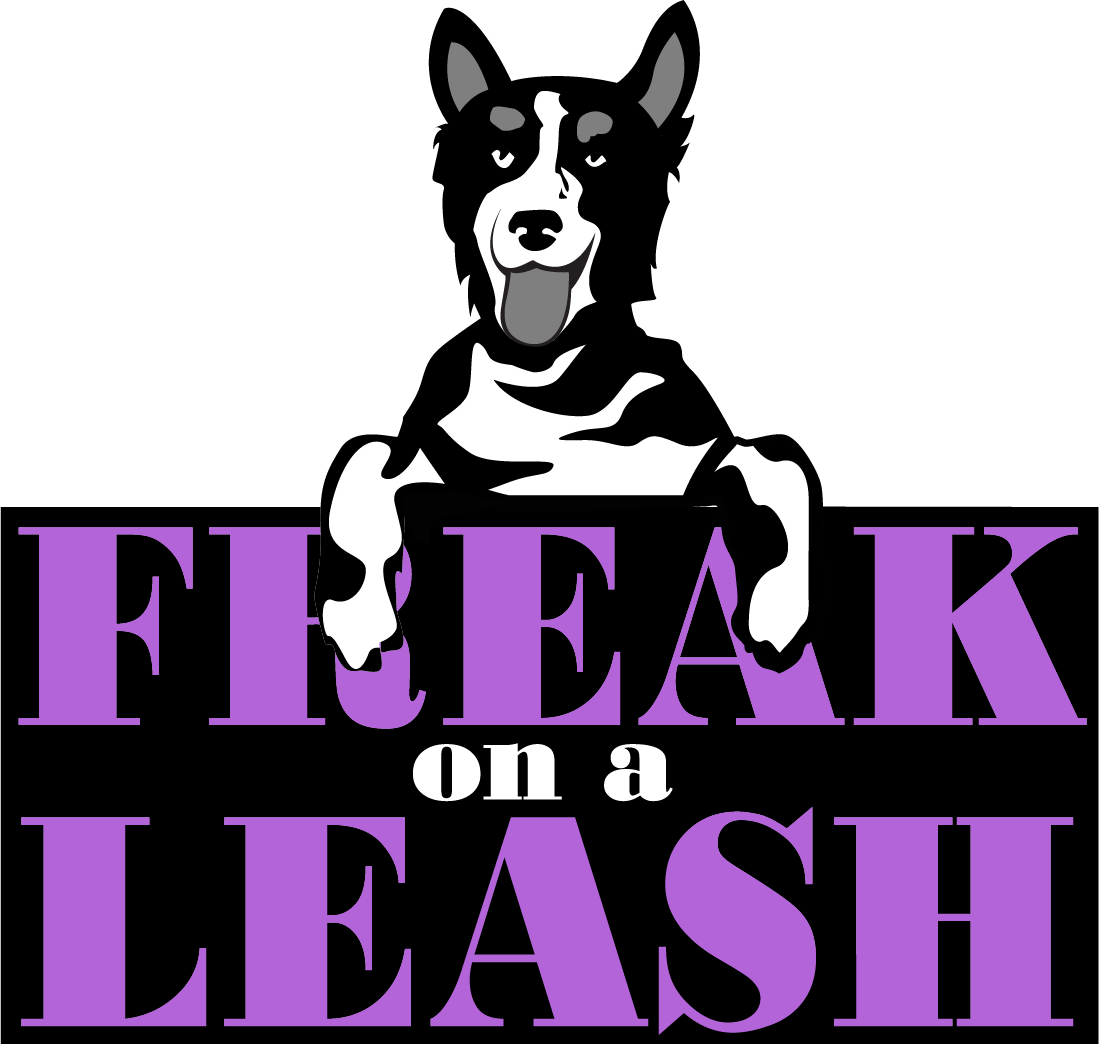Are you and your pup having difficulty mastering the art of loose leash walking? If so, you’re not alone! Many dog owners find themselves struggling to keep their pup from dragging them along when out for a stroll. Fortunately, with some tips and tricks up your sleeve—and lots of patience—you can help your pup learn how to stay beside you without pulling on the leash. In this blog post, we’ll cover 8 easy steps you can take to finally stop that pesky pulling behavior once and for all! Read on for more guidance.
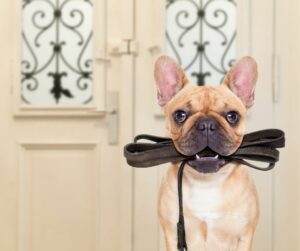 Start loose leash walking in your home before taking it on the road.
Start loose leash walking in your home before taking it on the road.
Loose leash walking is a great skill for dogs to learn and can help them stay close and safe on walks. Getting started with this skill at home is a great way to ensure success! Start by introducing your pup to the leash in their own space, preferably an area free of distractions. Make sure they get used to it so they will feel comfortable when you eventually take them out. Begin with short, simple exercises like allowing your dog to walk around while you follow close behind, keeping the leash loose but not long enough for it to drag on the ground. Gradually increase feedback as your pup masters staying close to you for increasing periods of time. With consistent practice, you’ll be ready for those extra-long walks with your pup staying close instead of constantly pulling ahead.
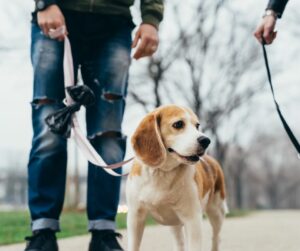 Practice in low-distraction environments to help your dog focus on you.
Practice in low-distraction environments to help your dog focus on you.
Loose leash walking is a key skill for any pup with proper petiquette, and one of the best ways to practice it is in low-distraction environments. This means seeking out locations that don’t have many other pets, people, or objects around to distract your dog from focusing their attention on you. Doing this helps dogs associate their human companion with good things like attention and treats. Many areas like parks or trails might be tempting spots due to all the excitement they offer, but if you’re trying to teach better leashed behavior, these can be too much of a temptation and make progress difficult. Low-distraction settings give you an opportunity to build positive reinforcement habits and bond with your pup without overwhelming distractions getting in the way.
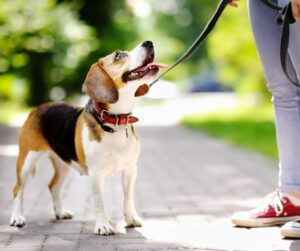 Offer verbal praise and treats when your pup is paying attention to you.
Offer verbal praise and treats when your pup is paying attention to you.
Teaching your pup, the basics of loose leash walking is an essential skill for successful walks and a strong pup-person bond. That’s why it’s important to reward your dog when he or she is paying attention to you and walking next to you with both verbal praise and treats! Keeping a happy tone of voice, using phrases such as “good dog” or “that’s right!” and offering them their favorite yummy treat will let them know when they’ve done something great. Not only will this help your pup understand what they need to do during walks, but it also promotes them feeling valued and secure – making walks more enjoyable for everyone involved!
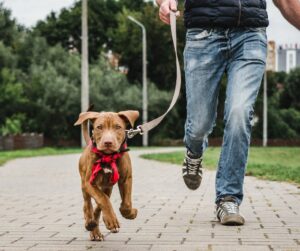 Keep training sessions short.
Keep training sessions short.
Keeping training sessions short is key to successful loose leash walking. Because dogs have a shorter attention span than humans, it’s important to limit their training time frame so that they stay focused and don’t get bored or discouraged. Shortening the sessions will also make your dog more likely to look forward to training instead of dreading it. Of course, that doesn’t mean that you should cut out important parts of the process – different techniques still need to be taught. Instead, break up your lessons into multiple smaller chunks throughout the day that are both engaging and manageable for your pup. By doing this, you can maximize your furry friend’s understanding and reinforce good habits with positive reinforcement in order to get them walking on a loose leash in less time.
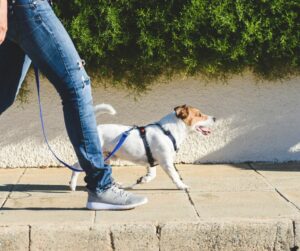 Turn around after 5 minutes and walk back home.
Turn around after 5 minutes and walk back home.
Loose leash walking is a great way to provide your dog with the physical and mental stimulation they need, while also reinforcing their bond with you. An effective strategy for doing this is to take walks that are no longer than five minutes in length. Once five minutes passes, turn around and begin walking back home; the return trip will often be less challenging for your dog to successfully follow your lead since there’s usually less unexplored activity or distractions in the area. They will likely stay closer to you compared to when it was new territory, allowing for ample opportunities for you to reward. Not only does this help instill better leash manners, but also allows both you and your pooch to end the walk on a high note!
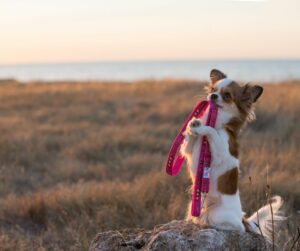 Get creative with games and activities to help teach the desired behavior.
Get creative with games and activities to help teach the desired behavior.
If you’re looking to get creative with activities and games to help your pup learn loose leash walking, Magic Hand is a great way to practice indoors or in the yard. This game requires you to have a handful of treats. Initially, you can practice this leash-free with your pup. As you are walking, treats from your magic hand will fall for your pup to catch.
Another game is called Drunk Walking. This fun and unique activity requires no alcohol, only a few delicious treats! To play, have your pup off-lead in the yard. Place one treat on the ground and quickly step away as you count to 3. Then place another treat down while counting out loud again before taking three more steps in another direction – be sure not to move too fast for them to see where it was placed! The goal is for your dog to find each hidden treat until all are gone. Find more games for loose leash walking here AKC Dog Walking Games.
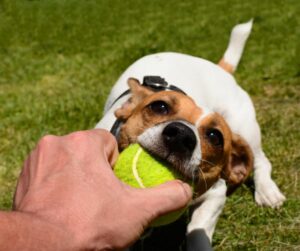 Play before you start your walk to get some energy out.
Play before you start your walk to get some energy out.
Before you start working on loose leash walking, make sure to give your dog some time to play and expend some of their energy. A quick game of fetch or a couple of minutes of tug-of-war can not only be enjoyable bonding time, but also help to ensure your pup has the right mindset for leashed walks. Engaging in meaningful play before beginning your walk can help foster focus when the two of you are heading out. All this play doesn’t just make the walk smoother – it’s a great way for both of you to start off in a positive, fun mood!
Try a longer leash.
If your pup is struggling to master loose leash walking, a longer leash may be the key to success. By giving your dog more range, you can encourage exploration of the environment rather than your dog having to stay close to you for the entire walk. You can also use exploration as a reward for a few minutes of not pulling. Not only can this help with loose leash walking–it might actually make the entire experience much more enjoyable for both you and your pup! A longer leash gives your pup a chance to take in the world, practice socialization skills, and burn off excess energy during walks. It also takes some of the pressure off the handler. Loose leash walking is an important skill for all dogs. Don’t be afraid to try a longer leash when it comes time to train yours!
Loose leash walking is much easier to train when you know the steps that are needed. An important concept to remember is to start teaching in your own home, gradually moving to more challenging environments. In addition, make sure training sessions stay short, offer verbal praise and treats when your pup does what is desired, get creative with games and activities, play before you start the walk to help get some energy out, and try a longer leash. All of these tips can help a lot in loose leash walking and will create a healthier relationship between you and your pup! Have you tried any of these tips and tricks? What was successful and what was not? Share with us below — we’d love to hear how things went for you!
Freak On A Leash group classes, and private instruction can help if you are struggling teaching your dog to walk nice. Reach out if you need help!
